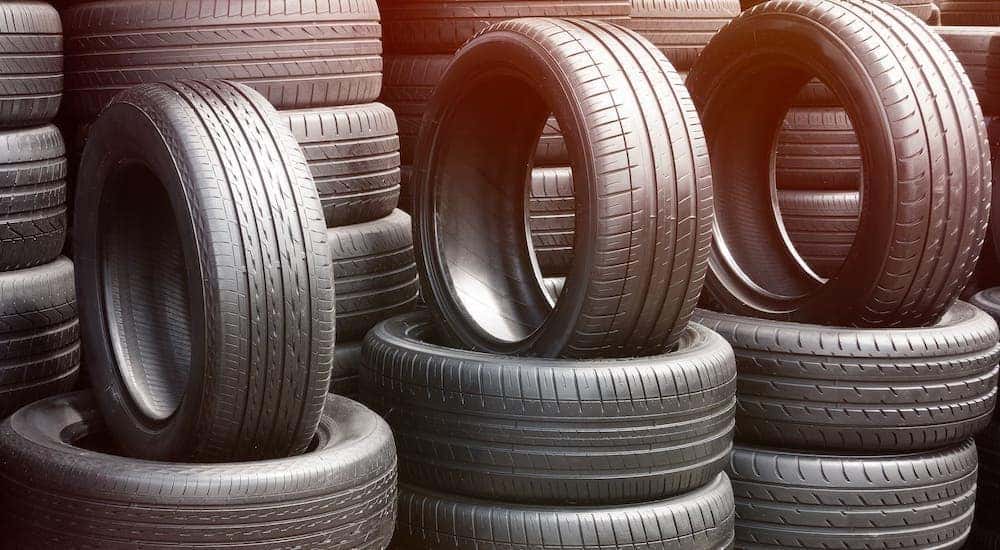Professional Morris Tire and Alignment: Enhance Your Lorry's Performance
Professional Morris Tire and Alignment: Enhance Your Lorry's Performance
Blog Article
Tire Solution: The Influence of Climate Condition
When it comes to ensuring optimum performance and safety and security on the roadway, understanding the effect of climate problems on tire service is important. In this discussion, we will check out the intricate partnership in between weather problems and tire solution, shedding light on the relevance of weather-specific tire upkeep methods and considerations.
Warmth and Tire Performance
When exposed to high temperatures, tires experience adjustments in efficiency that can considerably affect car security and handling. The warmth created from prolonged driving or hot weather condition conditions triggers the tire rubber to soften, leading to reduced step life and enhanced wear. As the rubber ends up being softer, the tire's hold on the roadway reduces, affecting stopping ranges and general grip. In extreme situations, too much warmth can also create tire blowouts, posturing a severe safety threat to the lorry and its residents.
Furthermore, high temperatures can increase the process of tire aging, creating the rubber to degrade more promptly. To minimize the results of heat on tire performance, motorists should routinely examine their tire pressure, rotate tires to make sure even put on, and evaluate for any indicators of damage.
Winter Impacts
Cold weather condition problems can have a significant impact on tire performance and safety and security. In cool climate, tires might also shed air pressure more quickly, which can impact handling and gas efficiency.
To mitigate the results of winter on tires, it is vital to on a regular basis check tire pressure and inflate them to the supplier's recommended levels. Making use of winter months or all-season tires designed for winter conditions can also enhance traction and hold on icy or snowy roadways - tire shop morris. Appropriate tire upkeep, including routine assessments for wear and damages, comes to be much more important during chillier months to make certain optimum performance and safety
Rainy Issues Effect
During stormy problems, tire performance and security can be substantially influenced by the damp roadway surface areas and decreased exposure. The step pattern of tires plays an essential duty in preserving grip on damp roadways. Tires with worn-out treads are more vulnerable to hydroplaning, where a layer of water accumulates in between the tire and the roadway surface area, bring about loss of traction. To fight this, chauffeurs must consistently inspect their tires for sufficient tread depth and consider buying tires particularly made for wet problems.

Snow and Tire Security
Snow-covered roads present one-of-a-kind difficulties for motorists, stressing the value of correct tire choice and maintenance. When driving in snowy conditions, having the best tires can make a considerable difference in security and performance. Winter season tires are created with unique rubber substances and walk patterns to supply much better traction on snow and ice compared to all-season tires. The much deeper treads and sipes of winter months tires aid grasp the roadway better, decreasing the danger of gliding and sliding.
Along with utilizing winter tires, it is critical to ensure they are appropriately blown up. Cold weather can cause tire pressure to go down, impacting grip and handling (tire shop the original source morris). Regularly inspecting and preserving the appropriate tire pressure is necessary for ideal performance in snowy problems

Weather-Related Tire Upkeep
When confronted with numerous weather, proper tire upkeep becomes a critical facet of lorry safety and security and performance. Weather-related tire maintenance encompasses a range of methods targeted at guaranteeing optimum tire feature and durability in different weather condition scenarios. One key aspect of weather-related tire upkeep is tire pressure guideline. Changing temperature levels can create tire stress to vary, influencing grip and fuel efficiency. On a regular basis changing and examining tire stress according to supplier referrals is necessary for secure driving in changing climate problems. Furthermore, tire tread depth plays a considerable role in managing various climate aspects. Tires with sufficient step deepness supply far better hold on wet or icy roads, reducing the danger of hydroplaning or skidding. Evaluating tire walk on a regular basis and changing tires when walk wear gets to a particular depth is vital for maintaining grip and security in unfavorable weather. By focusing on weather-related tire maintenance, drivers can boost safety and security, improve vehicle efficiency, and prolong the lifespan of their tires.
Verdict
In verdict, weather problems have a significant influence on tire performance and safety and security (tires morris il). From warm affecting tire stress and wear to chilly weather decreasing grip, it is essential to think about the weather when maintaining and using tires.
In this conversation, we will certainly check out the detailed connection between great post to read weather problems and tire service, losing light on the value of weather-specific tire upkeep methods and considerations.

Report this page